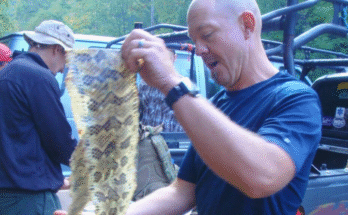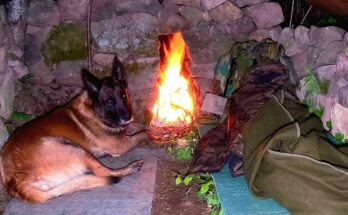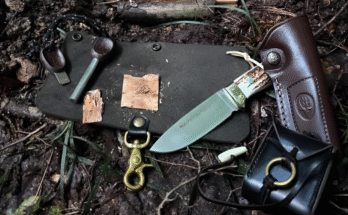Venturing into the wilderness, whether it’s a national park, remote trail, or a rock climbing expedition, can be an exhilarating experience for outdoor enthusiasts.
Venturing into the wilderness, whether it’s a national park, remote trail, or a rock climbing expedition, can be an exhilarating experience for outdoor enthusiasts.
1. Wilderness Awareness:

Before embarking on any wilderness adventure, it’s vital to develop a keen sense of wilderness awareness. Understand the terrain, local flora and fauna, and potential hazards. Awareness is the first step in ensuring your safety. More about wilderness awareness:
- Environmental Understanding:
- Terrain: Know the landscape, including its topography, geology, and features like valleys, ridges, and water sources. Understanding the terrain helps with navigation.
- Flora and Fauna: Recognize the native plants and animals in the area. Understanding the local ecosystem can aid in finding food, water, and potential hazards.
- Weather and Climate:
- Learn about the typical weather patterns and climate of the region you’re exploring. Knowing what to expect in terms of temperature, precipitation, and seasonal changes can help you plan accordingly.
- Local Hazards:
- Identify potential hazards specific to the wilderness you’re in, such as poisonous plants, venomous creatures, and natural disasters like avalanches or flash floods.
- Tracking and Observation:
- Develop skills in tracking and observation. This includes recognizing animal tracks and signs, which can provide valuable information about local wildlife and their behavior.
- Resource Awareness:
- Understand the availability of resources like water sources, edible plants, and potential sources of firewood. Knowing where to find these resources can be essential in a survival situation.
- Cultural and Historical Awareness:
- Learn about the history and cultural significance of the wilderness area you’re exploring. This can enhance your appreciation of the land and its heritage.
- Situational Awareness:
- Pay attention to your surroundings at all times. Be aware of changes in weather, the behavior of wildlife, and any signs of danger or discomfort.
2. Navigation Skills:

- Map Reading:
- Understanding topographic maps is essential. These maps show the terrain’s elevation and features, helping you identify landmarks, trails, and potential water sources.
- Compass Use:
- A compass is a valuable tool for determining direction. Learn how to read a compass and use it in conjunction with a map to plot your course accurately.
- Orienteering:
- Orienteering is a sport and a skill that involves using maps and a compass to navigate through unfamiliar terrain efficiently. Practicing orienteering can significantly improve your navigation skills.
- GPS Devices:
- While traditional navigation skills are essential, modern GPS devices can be valuable tools for pinpointing your location and tracking your route. However, always have a backup plan in case the device fails or loses power.
- Terrain Association:
- Terrain features like ridgelines, valleys, rivers, and prominent landmarks can help you orient yourself without relying solely on maps and compasses. Learn to recognize and use these features effectively.
- Sun and Stars:
- Understanding the movement of the sun and stars can provide directional clues. The sun rises in the east and sets in the west, and you can use the North Star (Polaris) for north direction in the northern hemisphere.
- Dead Reckoning:
- Dead reckoning involves estimating your current position based on your previously known position and the direction and distance you’ve traveled. While it’s not as precise as using a map and compass, it can be a valuable technique when no other tools are available.
- Trail Marking:
- If you’re following a trail, learn to recognize trail markers and blazes. These can guide you along the correct path and prevent you from getting lost.
- Backtracking:
- If you do become disoriented or lost, retracing your steps (backtracking) can sometimes lead you back to a known location or trail.
- Pacing and Timing:
- Estimating distances traveled based on your pace (the number of steps it takes to cover a specific distance) and timing (how long you’ve been walking) can help you gauge your progress and location.
- Navigation Practice:
- Regularly practice your navigation skills in various environments and conditions. This hands-on experience will build confidence and proficiency.
3. Firecraft:

Mastering the art of making fire is a cornerstone of wilderness survival. Understand various fire-starting techniques such as using a fire starter, friction fire, and identifying suitable tinder and kindling.
- Fire Starting Methods:
- Understand various fire-starting techniques, including:
- Fire Starter: Carry a reliable fire starter, like a ferrocerium rod or waterproof matches.
- Friction Fire: Learn how to create fire by rubbing two pieces of wood together (e.g., fire bow, fire plough, hand drill). This is a valuable skill but requires practice.
- Solar Fire Starting: Utilize the sun’s energy and a magnifying glass or other lens to start a fire.
- Flint and Steel: Use flint and steel to create sparks that can ignite tinder.
- Understand various fire-starting techniques, including:
- Tinder and Kindling:
- Identify and collect dry, flammable materials to use as tinder (e.g., dry leaves, birch bark, cotton balls soaked in petroleum jelly) and kindling (small twigs and branches). These are essential for building a fire.
- Fire Lay and Structure:
- Different types of fires serve specific purposes. Learn how to build fires such as the teepee, lean-to, log cabin, and Dakota hole, each designed for various conditions and cooking needs.
- Fire Safety:
- Practice fire safety to prevent wildfires. Choose a safe location away from dry vegetation, rocks, and overhanging branches. Clear the area and create a fire ring if possible.
- Sustainability:
- In a survival situation, it’s essential to use firewood responsibly. Gather dead and downed wood, rather than cutting live trees. Leave no trace when you’re done.
- Fire Maintenance:
- Once you have a fire going, maintain it by adding fuel gradually to keep it burning steadily. You’ll need to feed it consistently to keep it alive.
- Fire for Cooking and Purification:
- Fire can be used to cook food and purify water. Understand how to position pots or containers over the fire to cook food safely and how to boil water for purification.
- Signal Fires:
- In emergency situations, fires can be used as signals for help. Create a dense, billowing smoke by adding green vegetation to the fire, or use the fire to spell out distress signals on the ground.
- Fire-Starting Tools:
- Carry fire-starting tools in your survival kit, such as a waterproof container of matches, a lighter, or a fire starter rod. These tools provide a reliable means of starting a fire quickly.
- Practice:
- Regularly practice your fire-starting skills in various weather conditions. Wet and windy conditions can be especially challenging, so gaining experience in adverse situations is essential.
- Emergency Fire Starter:
- In extreme situations, you can use unconventional items to start a fire, such as a car battery and steel wool or a fire piston. These methods require knowledge and resourcefulness.
- Fire Safety:
- Always be mindful of fire safety. Keep a fire extinguisher or a means to extinguish the fire quickly, such as a bucket of water or sand, nearby.
4. Water Procurement:

Water is essential for survival. Learn how to purify water from natural sources and carry portable water purification tools like filters or chemical tablets. Staying hydrated is paramount in the wilderness.
- Identifying Water Sources:
- Learn how to recognize potential water sources in the wilderness. These can include rivers, streams, lakes, ponds, and even rainwater puddles. Knowing where to look is the first step.
- Water Purification:
- Never assume that natural water sources are safe to drink without treatment. Learn how to purify water using methods such as:
- Boiling: Bringing water to a rolling boil for at least one minute kills most pathogens.
- Chemical Treatment: Use water purification tablets or drops that contain chlorine or iodine to kill harmful microorganisms.
- Filtration: Use portable water filters or purifiers to remove bacteria, protozoa, and other contaminants.
- Solar Disinfection (SODIS): Fill clear plastic bottles with water and place them in direct sunlight for at least six hours to kill microorganisms.
- Carrying Water Containers:
- Always carry a reliable water container, such as a canteen, water bottle, or hydration bladder, to transport and store water. Collapsible containers are space-saving options.
- Collecting Rainwater:
- In rainy conditions, you can collect rainwater using improvised containers like tarps or large leaves. Ensure that your collection surface is clean.
- Digging for Water:
- In arid environments, you can dig a “seep” or “solar still” to collect water from the ground. This involves digging a hole and covering it with plastic to trap moisture.
- Identifying Edible Plants with High Water Content:
- Some plants have edible parts with high water content. Learning to identify and forage for these plants can supplement your water intake. Cacti are a well-known example in desert regions.
- Water Conservation:
- Conserve water by drinking in small sips rather than gulping it down. Also, avoid sweating unnecessarily and protect yourself from the sun to minimize dehydration.
- Animal Tracks and Signs:
- In some cases, animal tracks and signs (e.g., animal trails leading to water sources) can lead you to water in the wilderness.
- Testing Water:
- If you’re uncertain about the water’s safety, consider using water testing kits or methods to check for contaminants. This is especially important in unfamiliar areas.
- Emergency Water Sources:
- In dire situations, you may need to extract water from unconventional sources, such as plant roots, by using a water drip bag or solar still.
- Melt Snow and Ice:
- In snowy or icy environments, you can melt snow or ice for drinking water. Be sure to purify the melted water to eliminate any potential contaminants.
- Know Local Water Sources:
- Before heading into the wilderness, research and plan your route around known water sources. Knowing where reliable water can be found is a critical aspect of preparedness.
5. Shelter Building:

Knowing how to construct a shelter from available materials can mean the difference between life and death in extreme conditions. Tents are useful, but understanding makeshift shelters can save your life.
- Types of Shelters:
- There are various types of shelters you can construct depending on the materials available and the situation:
- Tarp Shelter: If you have a tarp or similar waterproof material, you can create a simple A-frame or lean-to shelter.
- Natural Shelters: These include debris huts, lean-tos made from branches and leaves, and snow caves or igloos in snowy conditions.
- Poncho Shelter: If you have a poncho, it can be transformed into a makeshift shelter.
- Rock Shelter: In rocky terrain, you can use large rocks to create a windbreak or partial shelter.
- Tree Well Shelter: In snowy areas, dig a well around a tree and create a sheltered space under its branches.
- There are various types of shelters you can construct depending on the materials available and the situation:


